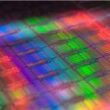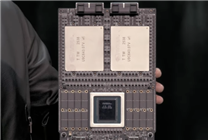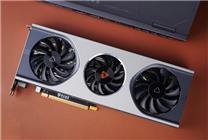The Rise of Chinese Chips in the Era of Supercomputing
Summary:
- NVIDIA announces its next-generation GPU, Vera Rubin, boasting unprecedented performance.
- Chinese AI models, Qwen and DeepSeek, are hailed as groundbreaking.
- NVIDIA expands its portfolio into quantum computing and 6G networks while facing increasing competition.
"Chinese chips are about to explode." This bold statement from NVIDIA’s CEO, Jen-Hsun Huang, followed the unveiling of the company’s new GPU, described as "the most powerful on earth." At a recent press conference, Huang spotlighted not just NVIDIA’s advancements but also the innovative contributions from Chinese AI models, claiming Qwen and DeepSeek represent "world-class and revolutionary" technologies.
During a lengthy Q&A session, nearly half of the queries posed to Huang revolved around China’s rapid advancements in chip technology, overshadowing the primary focus on NVIDIA’s latest innovations.
Huang introduced the Vera Rubin platform, dubbed "a nuclear bomb," with a computing power of 100 PFLOPs—100 times the capabilities of NVIDIA’s first AI computer, the DGX-1. With samples already in hand, mass production is expected by next year, aligning with NVIDIA’s ambitions for the tech giant OpenAI.
Innovations in Supercomputing
The Vera Rubin architecture represents a leap forward in supercomputing, marking the third generation of NVIDIA’s NVLink platform. This new design boasts a revolutionary architecture, featuring a main super chip with a Vera CPU and dual Rubin GPUs. NVIDIA has begun receiving the first batch of Rubin GPUs from TSMC, each equipped with HBM4 high-bandwidth memory and supported by 32 LPDDR memory slots.
At FP4 precision, the processing capabilities for floating-point computations reach 50 PFLOPs—significantly outpacing existing models. The Vera architecture employs an Arm design with 88 cores and 176 threads, promising an NVLINK-C2C interconnect bandwidth of 1.8 TB/s.
Huang showcased an integrated design for the Vera Rubin computing tray, combining two Vera CPUs and four Rubin packages into a compact, fully wireless, and 100% liquid-cooled unit. NVIDIA has also integrated Bluefield 4 data processors to accommodate the rising demand for AI-driven contextual processing.
In a light-hearted moment, Huang noted the ease of installation for this cutting-edge system, humorously remarking that even he could manage it. The first-generation NVL144 platform is set for launch in late 2026, promising FP4 inference computing power of 3.6 Exaflops and FP8 training power nearing 1.2 Exaflops.
The upgraded Rubin Ultra NVL576, expected in 2027, aims for FP4 inference performance of 15 Exaflops—an impressive 14-fold improvement on its predecessor.
Expanding Horizons: Quantum Computing & 6G
NVIDIA isn’t just focusing on supercomputers. In a groundbreaking move, the firm unveiled NVQLink, a revolutionary interconnect architecture able to link quantum processors (QPUs) with NVIDIA’s GPUs. This architecture facilitates rapid data transfer, crucial for quantum error correction, and advances in AI supercomputing.
Moreover, the firm is entering the 6G communications arena with its new NVIDIA Arc product line, designed for next-generation wireless applications. By partnering with Nokia, NVIDIA aims to develop an accelerated computing platform that marries AI processing and traditional RAN functionalities, marking a new era for telecommunications.
The Competitive Landscape
Despite its achievements and ambitious plans, NVIDIA faces mounting competition. AMD recently secured a contract worth $1 billion for two supercomputers, boasting AI performance threefold compared to current models. Meanwhile, Qualcomm is making its entrance into the data center market with innovative AI chips, further indicating that the competitive landscape is rapidly evolving.
Additionally, while NVIDIA envisions a collaborative future for quantum and AI computing, IBM is pursuing an alternative approach with no-GPU quantum computing—solving core challenges in the field without dependency on conventional hardware.
Conclusion: The Future of Infrastructure
As NVIDIA strives to remain at the forefront of tech innovation, the stakes in supercomputing, quantum computing, and advanced communications grow ever higher. Facing rivals like AMD and emerging technologies from Chinese firms, the sector is poised for substantial transformation. Stock market responses indicate investor confidence remains resilient, buoyed by NVIDIA’s recent announcements.
The question remains: in this comprehensive competition over critical infrastructure, who will ultimately emerge victorious? The race is on, and the world is watching closely.







